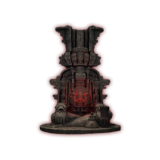Path of Exile 2 Dawn of the Hunt Overview
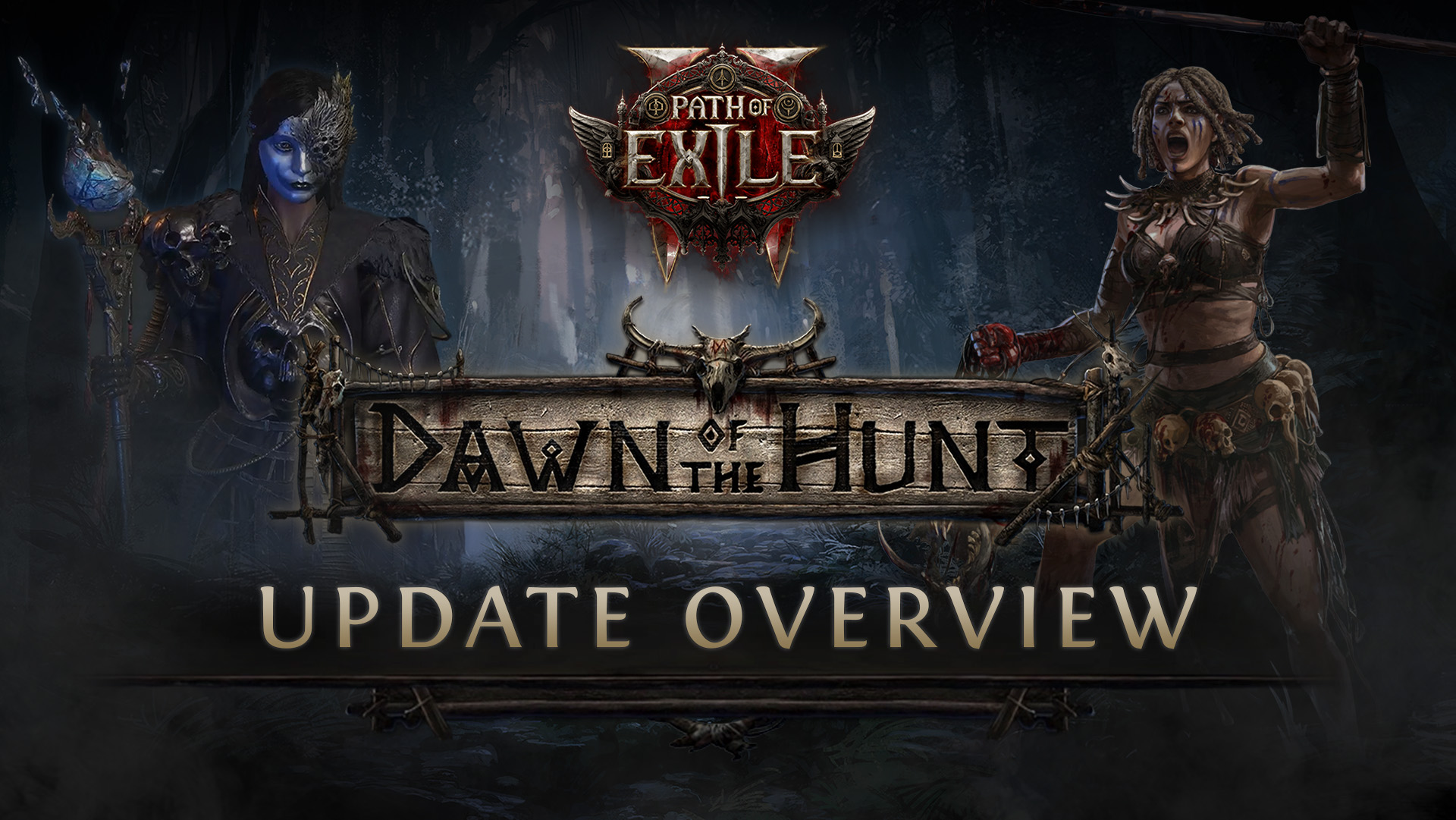
Introduction to PoE 2 Dawn of the Hunt
Welcome to our article on Path of Exile 2’s first major update, Dawn of the Hunt. Very similar to leagues from the first game, this massive patch adds an enormous amount of content to the game, holding up to the standard of Path of Exile 2 being one of the best ARPGs, constantly innovating and introducing new and exciting content for the players.
While the main theme and focus of the update is the introduction of the Huntress class, rest assured, GGG has added a variety of exciting features to expand on the previously lackluster endgame of PoE 2, alongside quality of life changes, and massive improvements to the crafting system, listening to the community as to what was troublesome in various aspects of the game.
In the following chapters, we will dive into every change coming to the ARPG, such as the new class, new ascendancies for already released classes, fresh skill gems and support gems, the plethora of changes to the endgame, and more. Ready to hunt, exile?
Release Date
The release date of the Dawn of the Hunt update is on April 4th at 9 PM CET / 3 PM EST / 12 PM PDT across all platforms. In a similar fashion to the launch of early access and previous Path of Exile leagues, we expect players to be able to log in earlier and reserve their spot in a queue so they can be automatically logged in as soon as the servers are up.
Economy Reset
Alongside the update's release, there will also be an economy reset coming to Path of Exile 2. While you get to keep your characters and all the progress that you have already acquired during the first stage of early access in a league similar to Standard for PoE 1 or Eternal for Diablo 4, there will also be a new league realm where everyone starts fresh.
This allows every player to experience the game once again, with all its stages of progression, while interacting with all the newly added features in the Dawn of the Hunt league. Resets like this are core to any ARPG, keeping things fresh, and allowing you to try different classes and builds.
New League Realm
With the upcoming Dawn of the Hunt patch, the game will be split into two different main realms: a seasonal-type realm, where everyone starts fresh, being able to experience all the new content, while characters from the first part of early access will be transferred to a standard realm, which will be the place where most characters end up at the end of every expansion and major update.
Additionally, both the league realm and standard one will be further split based on the game mode of your choice, with each featuring a Softcore realm, a Hardcore one, and an SSF one.
New content available on all realms
Compared to other ARPGs and leagues from the predecessor, in this Path of Exile 2 update, all the new content will come to both the fresh league, but also to standard, allowing players to choose if they would like to play in a new economy, starting from scratch, or explore the new content on their already existing characters.
This is excellent news for many players, as not everyone has the time to complete the grindy campaign once again, go through the leveling process, unlock atlas passive points, and complete all the other chores required to have a smooth endgame experience.
While the player base may end up being split depending on their choice of the league, the game has a massive pool of players, so there will most probably not be any shortage of resources in either league, both hosting a great environment for progressing and enjoying all the new content.
New class and ascendancies in PoE 2
The main focus of the Dawn of the Hunt league in PoE 2 is the release of the Huntress as the seventh class available in the game. Alongside the Huntress, we will also see the introduction of two new item types: spears, which are the main weapon of the new class, providing massive versatility as they can be used for both melee and ranged combat, and bucklers, which have a feature similar to the block mechanic of shields, allowing you to parry attacks and projectiles.
While this is the “main event” regarding class choice in the update, three of the already available classes will also receive their third ascendancy, specifically the Warrior, unlocking the Smith of Kitava, the Mercenary with the Tactician ascendancy, and the Witch being able to ascend as a Lich.
In the following chapters of our post, we will glance at all the classes and ascendancies coming in PoE 2 Dawn of the Hunt, alongside a brief overview of their strengths and specialties, helping you familiarize yourself with the new denizens of Wraeclast.
Huntress
Coming with the release of the Dawn of the Hunt league is the Huntress, a ranged/melee hybrid class that uses spears and bucklers as its weapons. Flawlessly swapping between sweeping slashes and martial prowess to throwing spears infused with a variety of elements, the Huntress excels in mobility and versatility, allowing for a satisfying gameplay loop that can easily decimate enemies.
Whether you prefer close combat by slashing enemies and maneuvering around packs of enemies, infusing your weapon with the power of the elements to deal devastating blows to anyone who gets close to you, or a range-oriented approach, where you rain hails of spears on the battlefield, the Huntress is the perfect choice for you.
Additionally, you can combine the two playstyles seamlessly transitioning between melee and ranged, and you also have access to the buckler, allowing you to parry incoming attacks. Moreover, you can even tame any beast you encounter, allowing you to have a trusty companion to aid you in combat against the corrupted enemies of Oriath.
Huntress Ascendancies
On release, the Huntress will arrive with two ascendancies available, each with its own unique playstyle: the Ritualist and the Amazon. While the Ritualist embraces the dark side of Azmeri traditions by harnessing the power of animal sacrifice and plague, the Amazon specializes in mastering fighting techniques, focusing on a simple attack-based gameplay loop.
The Ritualist gains access to a powerful set of abilities, allowing her to inflict Corrupted Blood on her enemies while also showing her prowess in dark magic by making use of magical trinkets, allowing her to equip an additional ring, and gain increased stats from equipped rings & amulets. Also, the Ritualist can absorb the power of Rare monsters, gaining some of their modifiers for short periods of time.

On the other hand, the Amazon can reveal weakness in Rare and Unique enemies, dealing increased damage to weak spots. Additionally, she can harness the power of the elements to infuse her weapon with fire, cold, or lightning and convert any additional accuracy into critical chance, showing her martial prowess by landing deadly strikes.
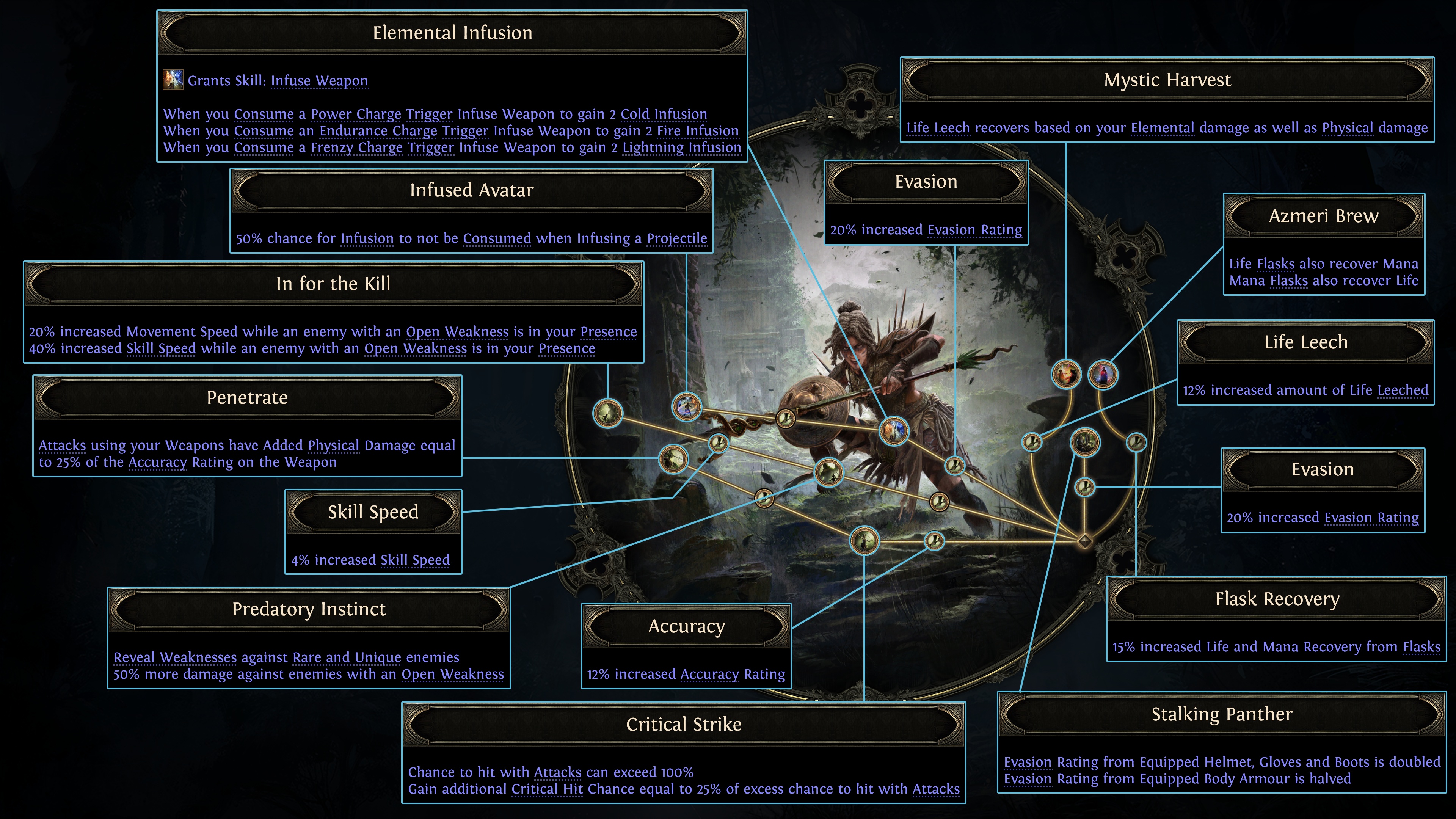
New ascendancies for existing classes
While the Huntress is the main star of the show when discussing classes, three of the already existing classes also received some love in the form of a third ascendancy: the Warrior unlocks the Smith of Kitava ascendancy, the Mercenary can now ascend as a Tactician, and the Witch can now harness the power of the Lich. We will briefly cover each of the new ascendancies in the following chapter, showcasing their strengths and prowess.
Warrior: Smith of Kitava
Smiths of Kitava are master blacksmiths that harness the power of fire, being able to temper their weapons, enhance them with fire, summon animated copies of their weapons to fight alongside them, and even forge armor to their liking, only being able to wear normal quality armor but gain powerful defensive stats through their ascendancy such as elemental resistances, max life, increased strength and more.
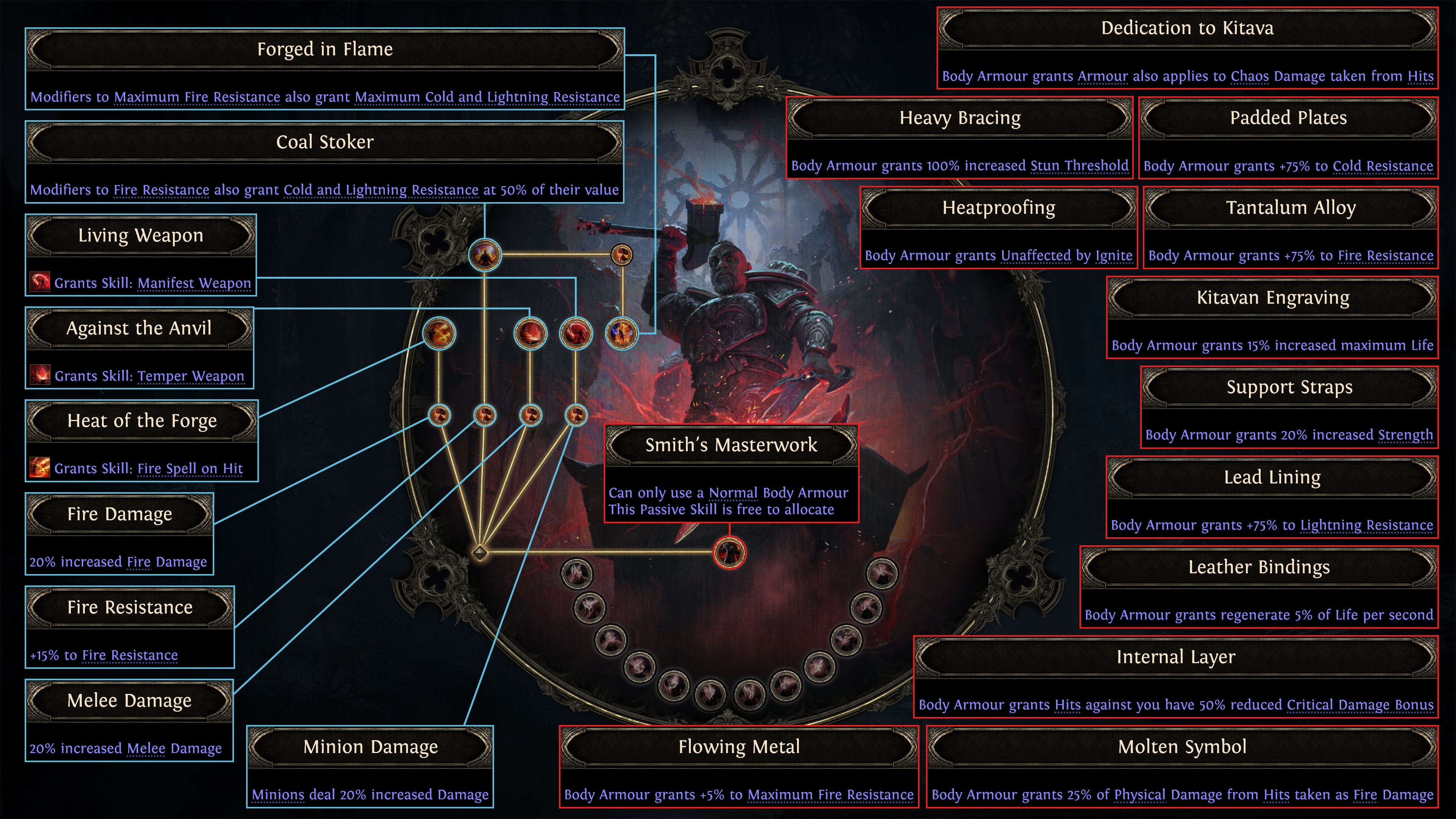
Mercenary: Tactician
Up next is the Tactician, a former Blackguard elite that focuses mainly on support-styled gameplaying, having passive nodes that alter the way Pin functions, essentially transforming it into a stun, and having the ability to place multiple banners, empowering their allies with a powerful suite of buffs at any time. Additionally, Tacticians grant nearby allies Attack Damage equal to 25% of their main hand weapon’s damage.
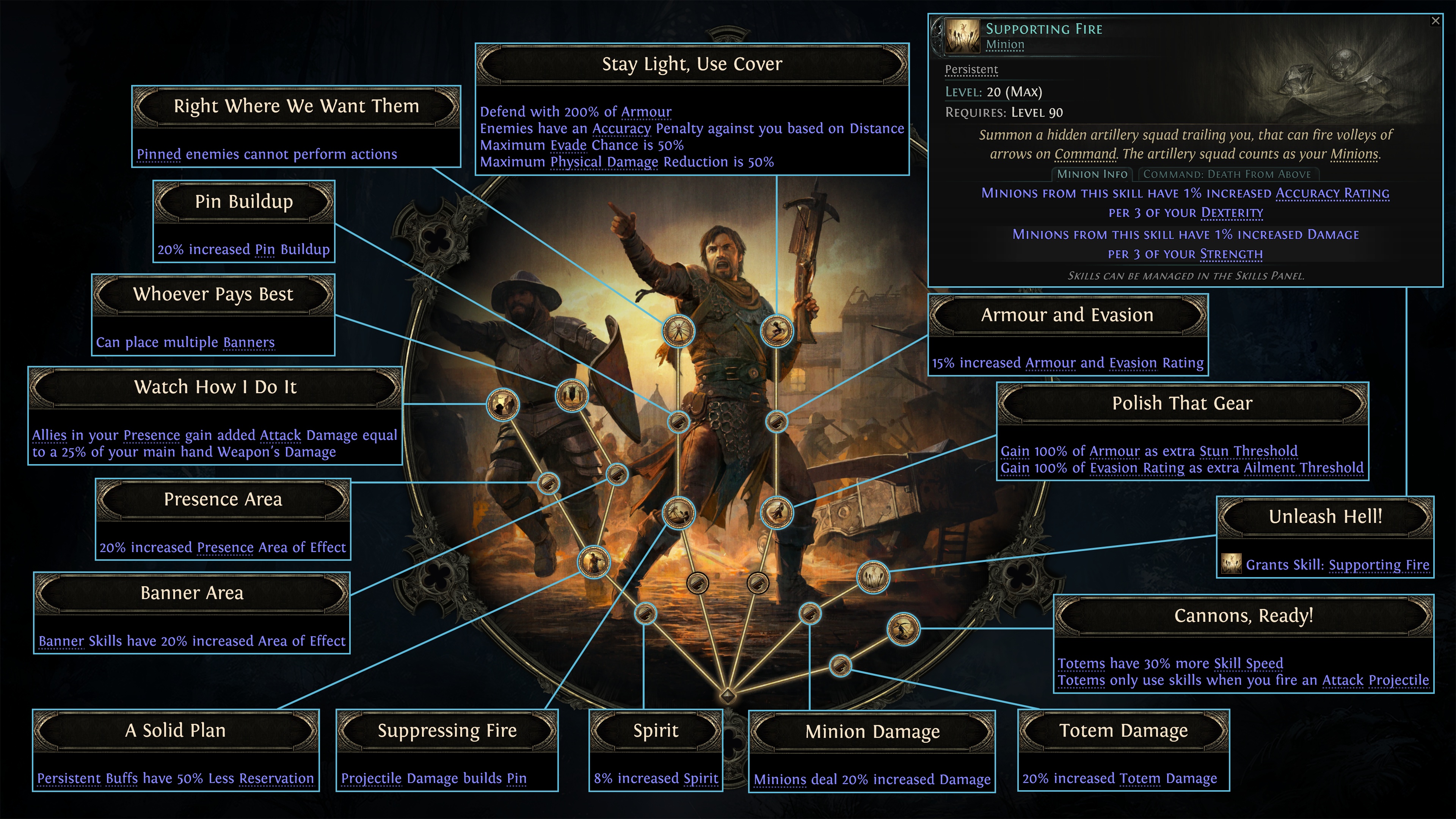
Witch: Lich
Last on the list, we have the Witch’s third ascendancy, the Lich, a master of chaos spells and curses, who is able to sacrifice her life in exchange for energy shield. Through her ascendancy passive tree, she can equip a jewel and increase its stats, grant Unholy Might to her and her allies, make cursed enemies explode on death, and even apply curses to Hexproof enemies.

Wrapping up with classes and ascendancies, we will move over to analyzing all the changes to gearing and skill gems in Path of Exile 2’s update.
Gear and Skill changes in PoE 2 Dawn of the Hunt
Together with the release of the new class, in PoE 2 Dawn of the Hunt, we also receive a variety of changes to gear, plus a plethora of new skill and support gems. There will be new Unique items, runes will be split into tiers, a new socketable type will be introduced, and we will also be able to acquire new ring & amulet bases that allow for intricate crafts.
New Skill Gems
Patch 0.2.0 introduces 20 new Huntress skill gems, alongside the long-awaited Raise Spectre skill gem, and even a mount-themed skill, the Summon Rhoa, allowing for a large variety of new builds to be created.

Rhoa Mount
Summon Rhoa is one of the newly introduced skill gems in PoE 2, allowing players to summon this companion which will help you fight against enemies, but also have the ability to mount it and move at full speed both in and out of combat while throwing ranged attacks at nearby enemies.
Spectres
Spectres are a new addition to PoE 2, which we have seen before in the first game, allowing summoner builds for various exciting minion combinations. By using the Raise Spectre skill, players can target the corpse of any enemy and raise it to fight alongside them. Raised spectres will be able to use all skills that the normal enemy would, allowing for diverse setups, either as a main DPS skill, or supportive spectres that grant buffs to you and your allies.
New Support Gems
As Path of Exile 2 was struggling with a lack of support gems, leaving players with little to no alternatives in their builds, Dawn of the Hunt aims to solve this issue by introducing over 100 new support gems. This massive addition of support gems focuses on offering variety and enabling less popular builds.
Some of the newly added support gems are: Loyalty, which redirects 10% of damage taken to your companion; Cadence, which increases the attack speed of skills but puts the spell on a cooldown after a certain number of uses; Rip, which creates life remnants on killing bleeding enemies; and Tear, which grants a chance to cause on-kill effects twice.
New Unique Items
Another focus in Dawn of the Hunt is the release of uniques that have build-altering effects, with the main focus being midgame and endgame-oriented uniques. A set of unique spears and bucklers for the Huntress are also introduced in the game, together with unique charms.
Here is an example of an interesting unique introduced in patch 0.2.0: The Coming Calamity – grants you all three Herald skills (Ash, Ice, and Thunder), a great amount of all elemental resistances, and treats enemies in your presence as if they had no elemental resistances.
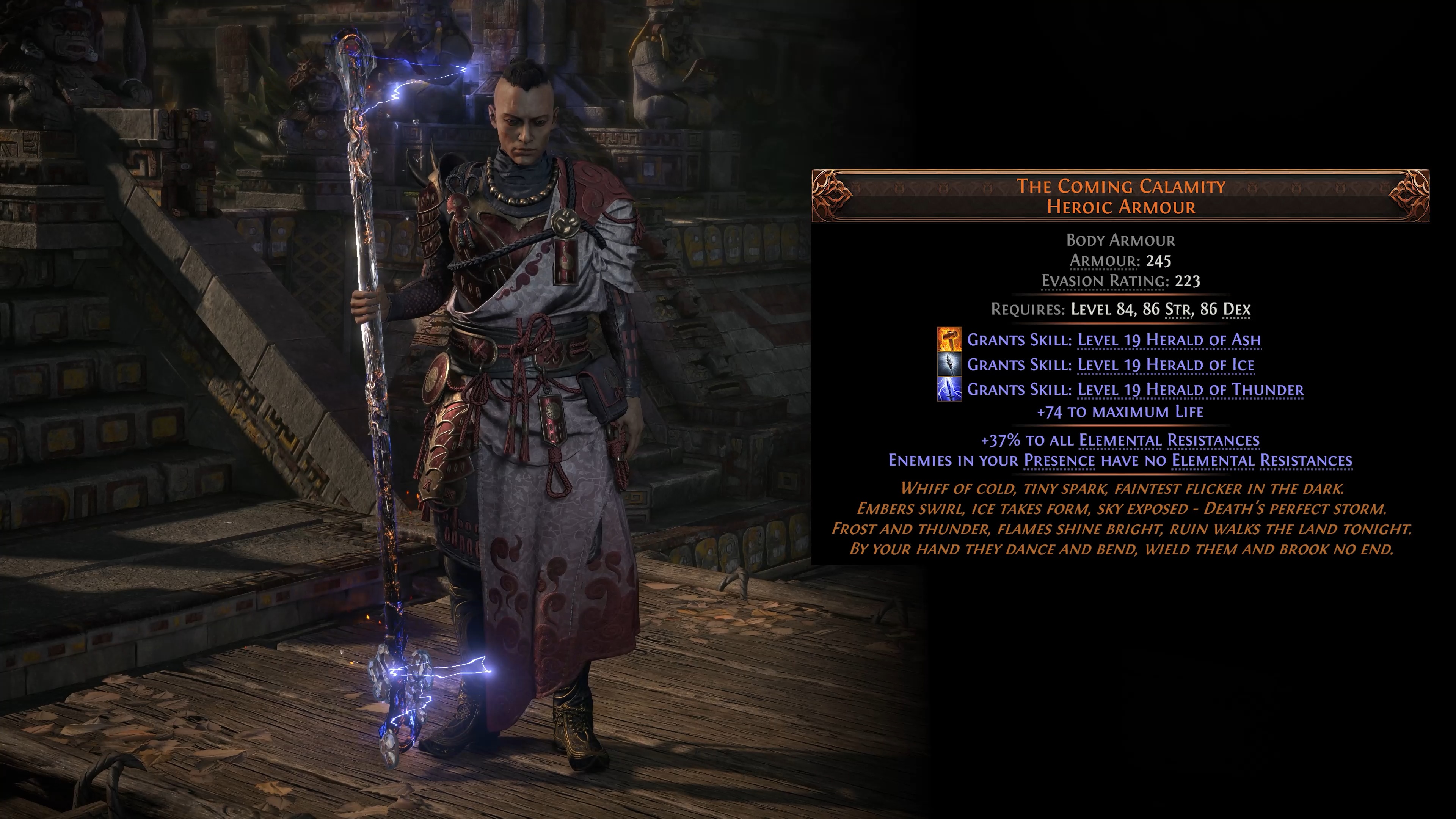
Unique Charms
Unique charms are a newly added type of unique in the PoE 2 Dawn of the Hunt update, providing special effects that interact in build-defining ways, allowing players to create specific archetypes, or giving very powerful defensive options.
One of the more interesting charms is Beira’s Anguish, which revolves around creating a self-ignite health stacking build archetype, as the charm triggers when you get ignited, to then ignite nearby enemies as if dealing fire damage equal to 25% of your max life.

Rune Tiers
Runes are also receiving a mini rework in the update, as certain modifiers such as flat damage easily got outscaled towards the endgame, so runes will receive tiers, granting increasingly higher stats based on their tier. This allows for easier access to certain stats, such as resistances and additional damage, acting even more similar to the prequel’s crafting bench.
Additionally, new types of runes will be introduced, exclusive drops to the Phaaryl Megaliths unique map, adding more niche effects and benefiting specific builds.
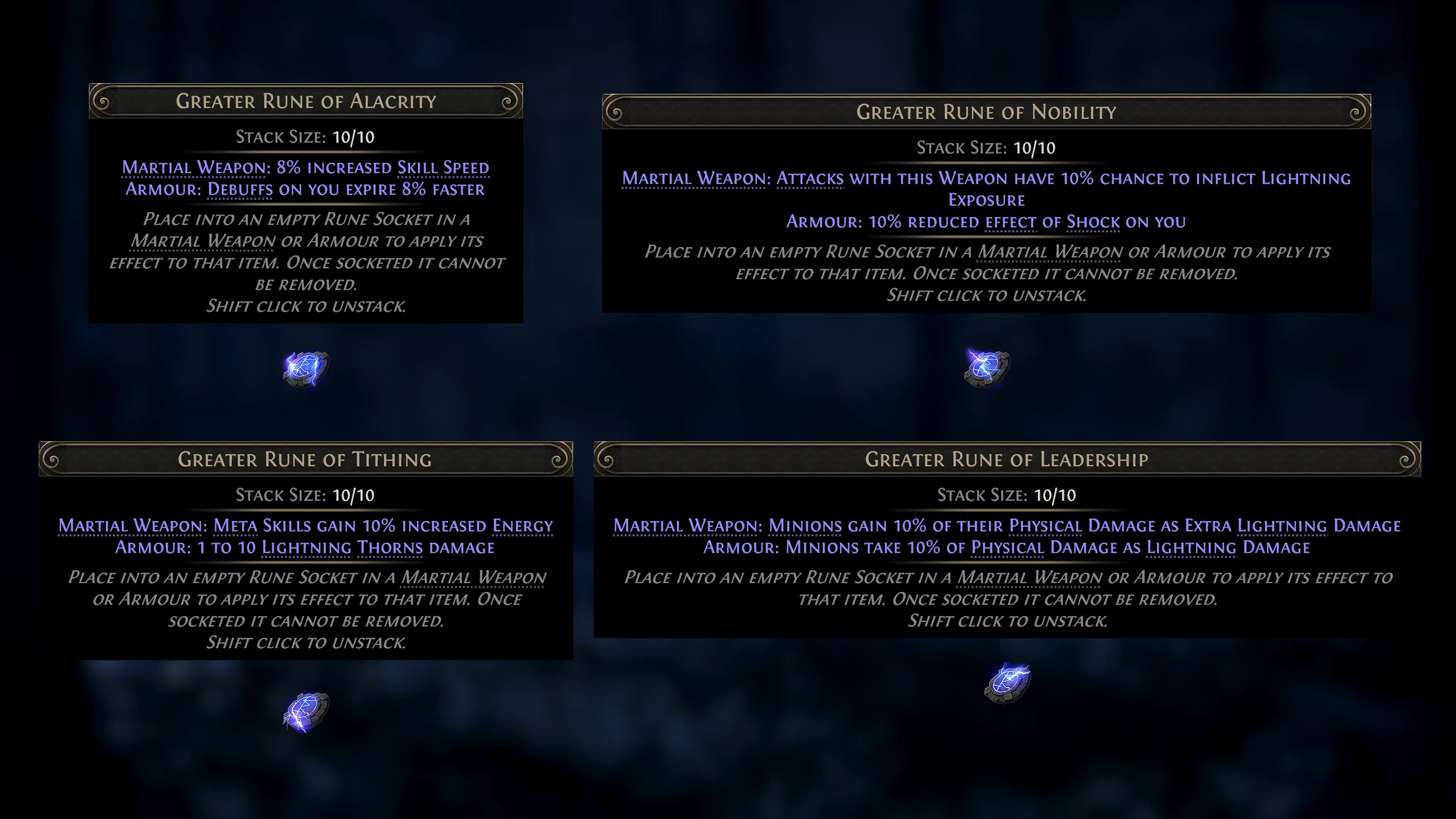
Talismans
Another new type of socketable added in Dawn of the Hunt are talismans, which, compared to runes, are restricted to a specific gear piece, but grant much more powerful and unique modifiers, which are very similar to jewel corruption implicits from PoE 1. Talismans can be obtained by defeating Azmerian wisp-infused monsters, which we will cover later in our article.
A few examples of talismans are the following:
- Cat Talisman – Hits against you have 10% reduced Critical Damage Bonus
- Boar Talisman – Gain 1 Rage on Melee Hit
- Rabbit Talisman – Corrupted blood cannot be inflicted on you

New ring & amulet bases
The final addition in PoE 2 patch 0.2.0 is a new amulet and ring base exclusively found in the Fractured Lakes map. These new bases allow for powerful and intricate crafts, as they can have additional prefixes and less suffixes, or the complete opposite, having additional suffixes and fewer prefixes.
Very similar to items from Heist in the first game, these items can allow for unique crafts, like amazing attribute stacking jewelry with STR, DEX, INT, and All Attributes, resistance stacking jewelry, triple added damage + max life/max ES, or even powerful magic find gear.
As we’re wrapping up with all the gearing changes in Dawn of the Hunt, we will move on to covering all the changes happening to gameplay and endgame systems, such as new mechanics players can interact with, reworks of already existing systems, and newly added encounters players can experience either during maps or through the campaign.

Gameplay and Endgame changes in PoE 2 Dawn of the Hunt
In Dawn of the Hunt, GGG wants to expand on the lackluster endgame of Path of Exile 2 from the initial state of early access, reworking certain systems and mechanics and adding new and exciting ones to give some flavor to the activities you can choose from when farming in the endgame.
Additionally, the developers have listened to the common complaints from the community and added a large variety of QoL changes, refining systems such as towers, tablets, and dying in maps, all topics we will cover more in-depth in this chapter of our guide.
Mapping Changes
First and foremost, we will look at the biggest change that affects all maps, which is that maps will not drop below the current tier. This creates an environment where you can easily progress and sustain maps, and you no longer have to struggle in high-tier maps by only dropping maps of very low tiers, which are pointless after a certain point in the game, solving one of the major issues in PoE 2’s endgame.
In the following couple of chapters, we will cover all the changes coming to maps in PoE 2, starting from the newly added unique maps to the changes related to corrupted maps and the addition of the Corruption Nexus and Cleansed Maps.
New Unique Maps
With the release of Dawn of the Hunt, 7 new unique maps are introduced in the atlas map pool. Each map has unique mechanics and specific rewards, making running these maps essential to improving your character. In the list below, we will go through each unique map, alongside their specific mechanic and reward, helping you familiarize yourself with the new endgame zones:
- The Silent Cave – In this unique map, you will enter a crystalline cavern with a powerful map boss surrounded by essence imprisoned Rare monsters. When you free and defeat each rare mob, the essence they possess will be upgraded to Greater and added to the imprisoned map boss. Depending on your build's strength and confidence, you can stack the boss with many essences, or settle for a few.
- The Ezomyte Megaliths – This map's primary focus is the rune-carved stones you will encounter when exploring the zone. Activating each one will summon a boss, up to 10 waves, with each wave getting more difficult than the previous. The reward for defeating the bosses are Runes exclusive to this area, which offer powerful and unique effects compared to your common ezomyte rune.
- The Fractured Lake – Themed around Kalandra and the coveted Mirror of Kalandra currency, this map features a surreal waterscape that contains fractured mirror-like objects, very similar to the league mechanic from the Lake of Kalandra league from PoE 1. In this map, each rare monster is duplicated. Suppose you manage to clear the map to the end. In that case, you will be faced with a broken mirror that allows you to pick an amulet or ring that can be crafted to have additional prefixes or suffixes, with the opposite number of affixes of the other type being reduced.
Corrupted Maps Changes
Another major change to mapping is related to corrupted zones. In the center of each corrupted zone, there will be a Corruption Nexus, the source of the corruption in the area. A powerful boss will spawn upon defeating all rare monsters in the Nexus. When the boss is defeated, Doryani will come and cleanse the zone of corruption, granting you a Crystalline Shard and transforming all maps in the area into Cleansed Maps, which are topics we will discuss in a moment.

Cleansed Maps
Cleansed maps are a new type of zone introduced in PoE 2 Dawn of the Hunt, directly tied to corrupted zones and the Corruption Nexus. Once players defeat the boss of a Corruption Nexus, all remaining corrupted maps in the area will transform into cleansed maps, hosting packs of cleansed monsters, and 3 new unique bosses.
By defeating these special packs of mobs, or respectively the bosses, players can obtain Fracturing Orbs, which are used to lock 1 modifier on an item. We will discuss further on the use of Fracturing Orbs later into our post, explaining how they work, their importance, and crafting uses.
Atlas Point Changes
The last change related directly to mapping is the way players obtain the Atlas Passive Points for the main skill tree. Previously, you had to clear a certain number of maps of a certain tier in order to gain 2 passive points at a time. With the new system, all you have to do is defeat the boss inside a Corruption Nexus on maps of each tier, gaining 2 points for each cleansed Nexus.
Additionally, 10 extra Passive Points have been added, which can be obtained by completing different Unique maps, with the condition that you must be the one opening the maps for the completion to count towards your atlas progression. These are not the only changes related to the Atlas Tree, as you can now also find nodes for the new league mechanics alongside improved versions of previously existing ones.
SKIP THE GRIND BUY POE2 BOOSTING SERVICES!
Pinnacle Boss Changes
The next biggest changes in Dawn of the Hunt are a bunch of QoL fixes to PoE 2’s pinnacle bosses. The first major change is that the XP penalty on death is removed when facing pinnacle bosses, so now you do not have to worry anymore about losing your hard-earned XP when facing these titans of Oriath.
Additionally, all item drops are now available on all difficulties, with lower drop chances but still increasing the chances of obtaining a chase unique as you progress your atlas. Also, another main change to help with progression and the difficulty curve of pinnacle content is lowering the HP of lower tier bosses, with T0 bosses having half the HP they previously had, scaling up between tiers, and T4 bosses having the exact same HP as before.
Next up, we will explain the changes happening to towers and tablets, which are mainly directed towards the quality of gameplay, similar to all the previous endgame topics we’ve covered.
Tower and Tablet Changes
Towers and tablets are one of the endgame mechanics in PoE 2 that desperately needed a rework, as it was very tedious to manage towers and juice your maps when farming. Listening to the community, GGG is applying a generous amount of QoL changes to both, making it easier to juice your maps, which we will cover in this chapter.
First, there will be approximately three times fewer towers on the map, and tablets will now affect twice as many maps as before (up to 20 maps range). This makes it less tiring to plan out how you will navigate the atlas, as you won’t have to hunt for areas with clusters of towers, and each tablet will provide more bang for the buck due to the increased number of maps affected.
To counter the effect of fewer towers, depending on the map tier used when completing a tower, the effects of socketed tablets will be increased by up to 100%, with each tablet being able to affect up to 40 maps.
Moreso, based on the number of modifiers on the map used when clearing the tower, you can unlock up to 3 tablet slots in each tower, with the first tablet slot being unlocked by simply clearing the tower, the second one requiring to use a map with 3+ modifiers, and the third one needing you to clear the tower using a map with 6+ modifiers.

To improve the quality of towers even further, they can now also feature league mechanics and map bosses, so using juiced maps inside towers provides even more benefit, let alone the increased effect of tablets based on map tier and the additional tablet slots.
Considering all these changes, the endgame has been vastly simplified and has become less of a hassle, making it way more accessible and fun for every player in Path of Exile 2.
Unique Tablets
Another major feature related to towers is the introduction of unique tablets. These tablets offer powerful and unique modifiers, allowing you to completely shift the playstyle of league mechanics by using them. An example of the modifiers that unique tablets use is “All Maps in Range can be accessed,” which basically allows you to go directly to any map in the range of the tower without requiring you to clear every map to reach the desired one.
Moving on from changes to core systems of the endgame, we will now explore the plethora of new league mechanics and essential changes to existing ones.
Azmerian Wisps
Azmerian Wisps are the first new mechanic players will encounter in the Dawn of the Hunt update, starting from Act I, in Grelwood. The Wisps act very similar to Tormented Spirits from PoE 1, running away from the player and possessing and buffing monsters on the way, until they reach a rare mob, with their speed depending on how close you are to the wisp.
If you stray too far away from the wisp, it is going to despawn, so it’s recommended to keep up with the NPC and clear mobs it touches on the way. Upon defeating the rare mob at the end of its path, you will be rewarded with loot based on the number of mobs defeated before killing the rare.
Wisps come in multiple types, each one granting a special ability to the rare mob, and increasing different stats of the mobs they pass through on the way. Below, you can find a list of some of the wisp types, alongside the stats they grant to enemies:
- Wisp of the Great Bear – Increases life and stun buildup
- Wisp of the Winter Owl – Monsters deal extra cold damage and have additional energy shield
- Wisp of the Wild Cat – Monsters have higher critical hit chance and evasion rating
- Wisp of the Cunning Fox – Turns normal mobs into magic, magic mobs into rare, and rare mobs into unique
The reward tied to Azmerian Wisps are talismans, which are socketable items similar to runes that grant powerful and unique modifiers, but can only be socketed into specific item types. Depending on the kind of wisp, a different type of talisman can drop as a reward.
Additionally, there will also be an endgame map, the Azmeri Ranges, a mountain village where the Azmeri Elders used to live before the corruption took over, in which players can encounter multiple wisps, and a familiar boss, the King in the Mists.
Following up on the list, we have Rogue Exiles, a league mechanic that we’ve known for a long time from PoE 1, making their appearance in the world of the sequel as well.
Rogue Exiles
Rogue exiles are very similar to you, being either violent criminals, exiles who went mad, or simply hunting others out of greed for loot. They use gear & skills identical to a player, making each encounter with a rogue exile feel as if you were fighting in a PvP battle.
Each exile wears specific unique items, which you can see under their HP bar, and upon defeating them, the respective uniques will drop for you. Although the rewards can be amazing, rogue exiles are smarter than normal enemies, dodging attacks, maneuvering around you, and hitting hard. Despite that, just like you, they are not tanky unless they are wearing specific uniques, so in most cases, it will be a fair fight.
There are a total of 12 rogue exiles you can encounter, each with their own playstyle, set of skills, and personalities, which you will have to discover by encountering them yourself.
Unique Strongboxes
The next addition to PoE 2’s endgame in Dawn of the Hunt are unique strongboxes containing exclusive rewards and challenges. Here are some examples of unique strongboxes in the new update:

- Ogham’s Legacy Strongbox – The box displays the corpse of a rare monster, which will be revived once you interact with it. Each time you kill the monster, it will revive with an additional modifier and drop better loot, up to a certain number of times, shown as a modifier on the strongbox.
- Ixchel’s Torment – This box contains the power of the Vaal, holding a corrupted unique item inside. Once opened, a large number of Vaal monsters will spawn, and if you manage to defeat them, the box will drop a random unique item with a corrupted modifier.
Ritual Changes
Another major QoL change that is coming to PoE 2 with the 0.2.0 update is regarding Ritual. Previously, Rituals had a chance to spawn with an Omen in each encounter. Now, Rituals will be guaranteed to have 1 Omen in each map, solving a major issue in the first stage of EA: the rarity of omens gatekeeping the casual player base from accessing high-end crafting.
While it may still be not easily accessible to meta-craft in PoE 2, it will definitely become way easier and will open way more opportunities for a larger part of the community, being a step in the right direction for the future of the game’s economy.
Endgame Death System
The final gameplay system that receives changes are portals and deaths in maps. Previously, if you died inside a map, it would instantly close, bricking the map. In Dawn of the Hunt, maps will have up to 6 portals (respawns) based on the map's rarity (lower rarity meaning more respawn attempts).
This change will significantly speed up early progression in maps and make the endgame less punishing for unexperienced players or players who are not playing the strongest builds in the meta, with the devs once again listening to the community and delivering one of the most requested features for the game.
Closing off the chapter about gameplay and endgame changes, we will now examine the last part of the major patch, all the new and reworked crafting systems coming in PoE 2 Dawn of the Hunt.
New Currencies and Crafting Systems
Expanding on the lackluster crafting system present on the release of early access, the 0.2.0 patch adds two new crafting currencies, alongside the recombination system, while also giving Expedition a greater purpose in the grand scheme of crafting.
We will explore each of the crafting systems, explaining how they work, how you can obtain the required currencies, and their optimal use cases in crafting the perfect gear for your PoE 2 character.
Fractured Items
First of all, making a reappearance from the first game are fractured items, together with fractured orbs. While it will not be possible to drop items with fractured modifiers, you can create them by using a fracturing orb. Now, you may ask yourself, what is a fractured item? Well, a fractured item is a piece of equipment that has a fractured mod, with the specific characteristic of this affix type being that they cannot be removed from the item through any means.
Items can only have one fractured modifier, so in most cases, you would want to fracture the rarest or hardest to roll modifier out of all 6 on an item, based on the desired craft. This allows for many methods of crafting, combining omens, chaos orbs, exalted orbs, and orbs of annulment to roll for a specific part of the item (prefixes/suffixes or a combination of two rare mods), making it much easier to obtain bases to craft on.
Fracturing Orbs
Fracturing orbs are the currency that lets players create fractured modifiers on an item. They can only be used on items with 4+ modifiers, and once used, they will lock in a random affix out of all the available ones, adding an element of RNG to this crafting method. While it may take multiple attempts to hit a fracturing orb on the desired mod, it is definitely worth it in the long run, as you will now have a crafting base you can keep working on.
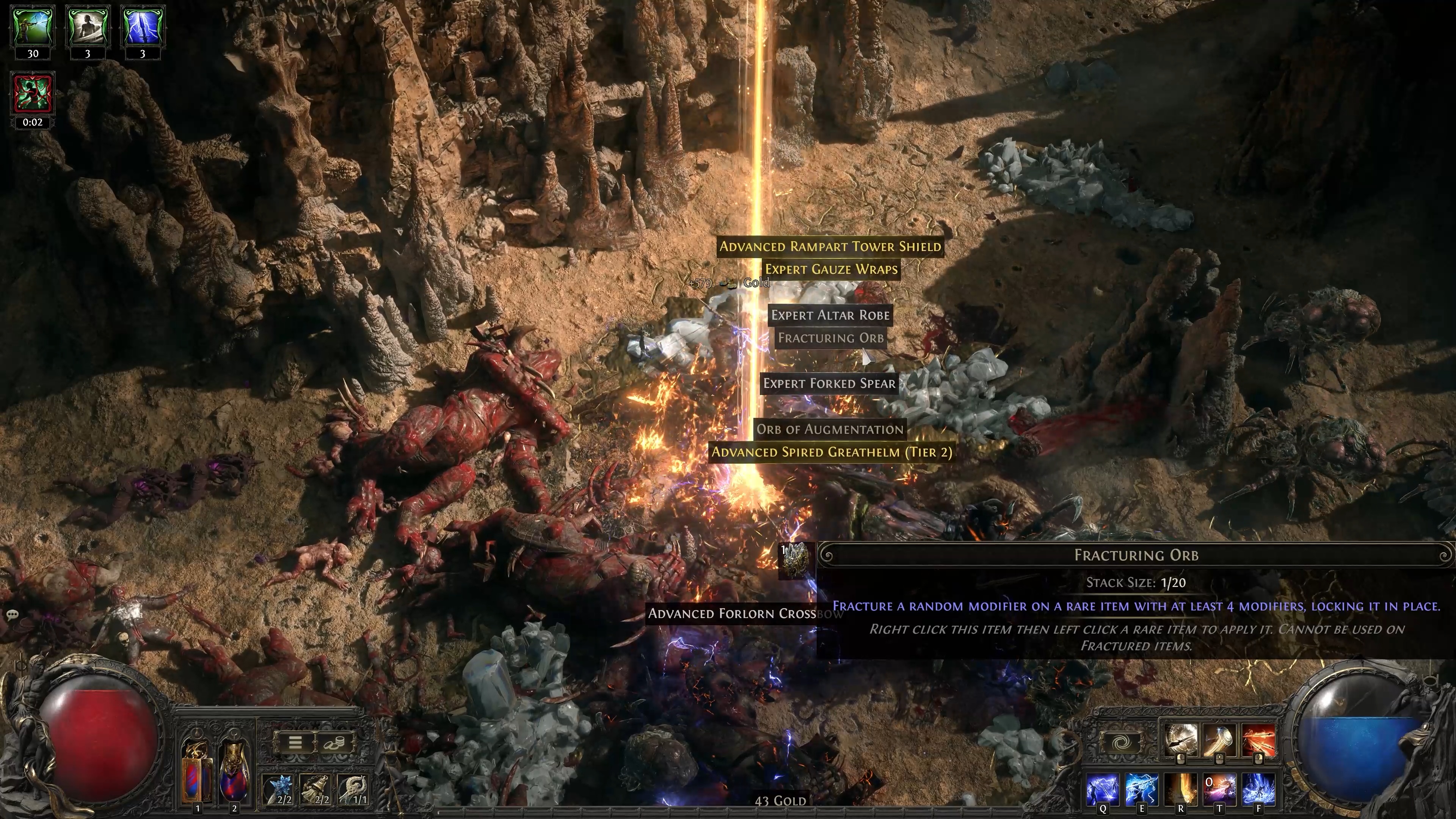
This new currency can be obtained from one of the newly released mechanics in the game, cleansed maps. Players can drop this coveted crafting currency by defeating cleansed mob packs or bosses, which can then be sold for other currencies, like divine or exalted orbs, or used to craft gear.
Corrupted Essences
Next up in the domain of crafting, we have corrupted essences. Another type of currency that comes back in the game from the prequel are corrupted essences, which generally have more powerful and unique effects than their normal and greater counterparts.
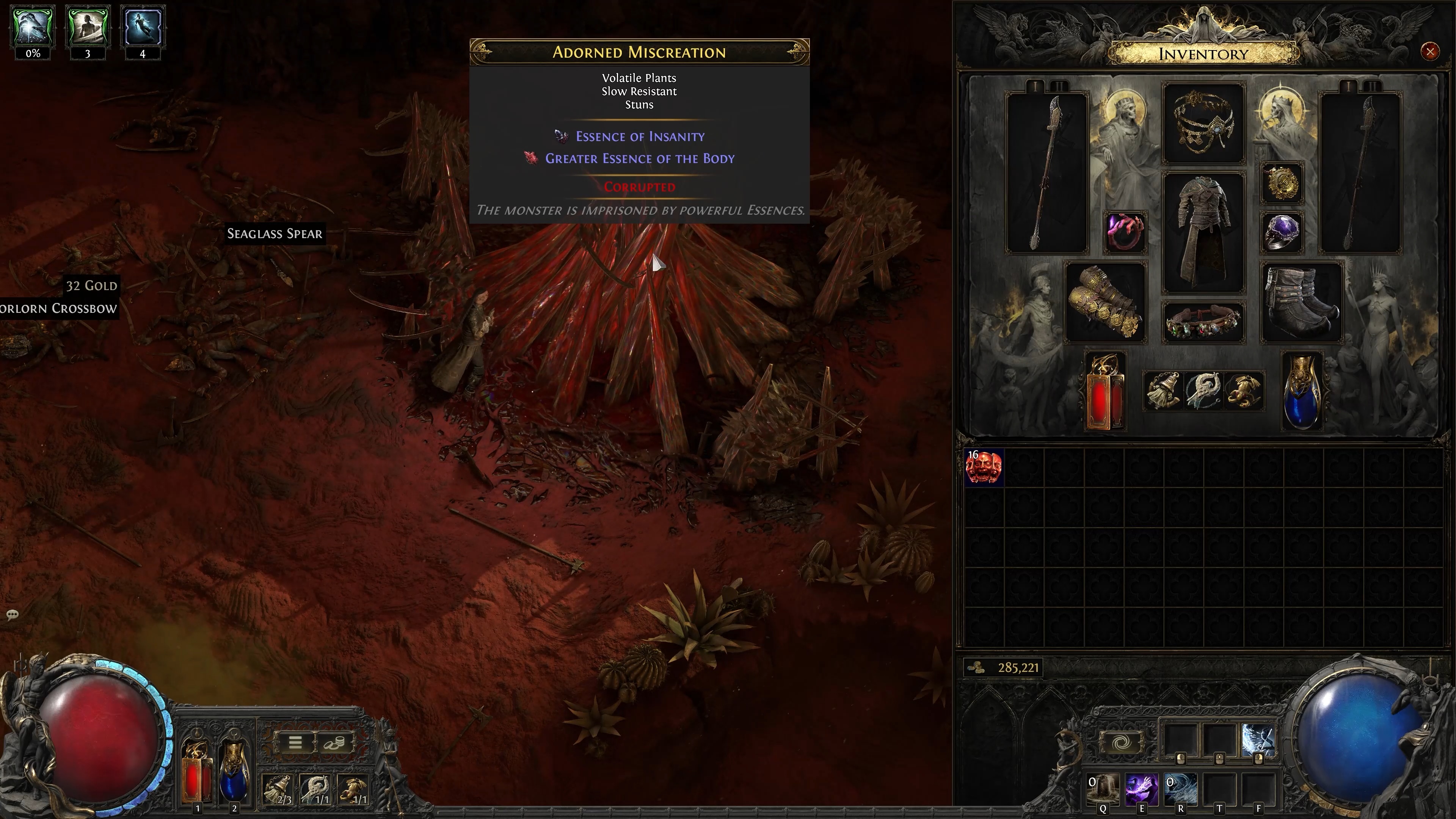
Examples of the possible modifiers that corrupted essences can grant are “50% increased effect of socketed runes and soul cores” and “On corruption, the item gains two enchantments.” While the effects are perfect for various crafts, obtaining them is no easy feat. In order to get corrupted essences, you have to vaal orb an essence-imprisoned monster with a greater essence.
It is not guaranteed that the greater essence will turn into a corrupted one, as there are other outcomes as well, such as rerolling the essences that the monster is holding, or nothing happening. Similarly to corrupted items, once you have vaaled an essence mob, you cannot corrupt it again.
Recombination
The final crafting system that is arriving in PoE 2 is recombination. Once more, another crafting mechanic that PoE 1 players are familiar with, recombination allows you to merge two items together, with the outcome being a combination of modifiers from both items, or sometimes even new ones. While this involves heavy RNG, it can also easily lead to crafting the best items in the game, as you can combine two items with 2 to 3 great modifiers, ending up with a close-to-perfect gear piece.
In order to access the recombination table, players must complete an expedition. Each recombination attempt will have a specific cost in artifacts, based on the amount of modifiers on each item. This brings both a power creep mechanic to Expedition and also incentivizes players to run logbooks, as Expedition was one of the least popular activities in the first patch.
Final Thoughts
Now that we’ve covered every single change coming in PoE 2’s newest league, Dawn of the Hunt, we hope you are excited about all the new content and hope to see you on the coasts of Wraeclast once again in the Dawn of the Hunt league realms, starting April 4th.
Related Guides
Now that you have learned about the Ranger class in Path of Exile 2, how about you check out our related guides for this ARPG?
- Path of Exile 2 Leveling Guide
- Path of Exile 2 Currency Guide
- Path of Exile 2 Best Classes Guide
- Path of Exile 2 Gearing Guide
- Path of Exile 2 Beginner Guide
- Path of Exile 2 Trading Guide
- Path of Exile 2 Crafting Guide
- PoE 2 Witch Guide – Complete Class Overview
- PoE 2 Mercenary Guide – Complete Class Overview
- PoE 2 Warrior Guide – Complete Class Overview
- PoE 2 Sorceress Guide – Complete Class Overview
- PoE 2 Monk Guide – Complete Class Overview
If you find yourself struggling against the corruption, or find the grind too long and tedious, at KBoosting, besides articles & guides, we also provide PoE 2 boosting services. All you need to do is contact us and let us handle everything for you while you have some fun in the game!



